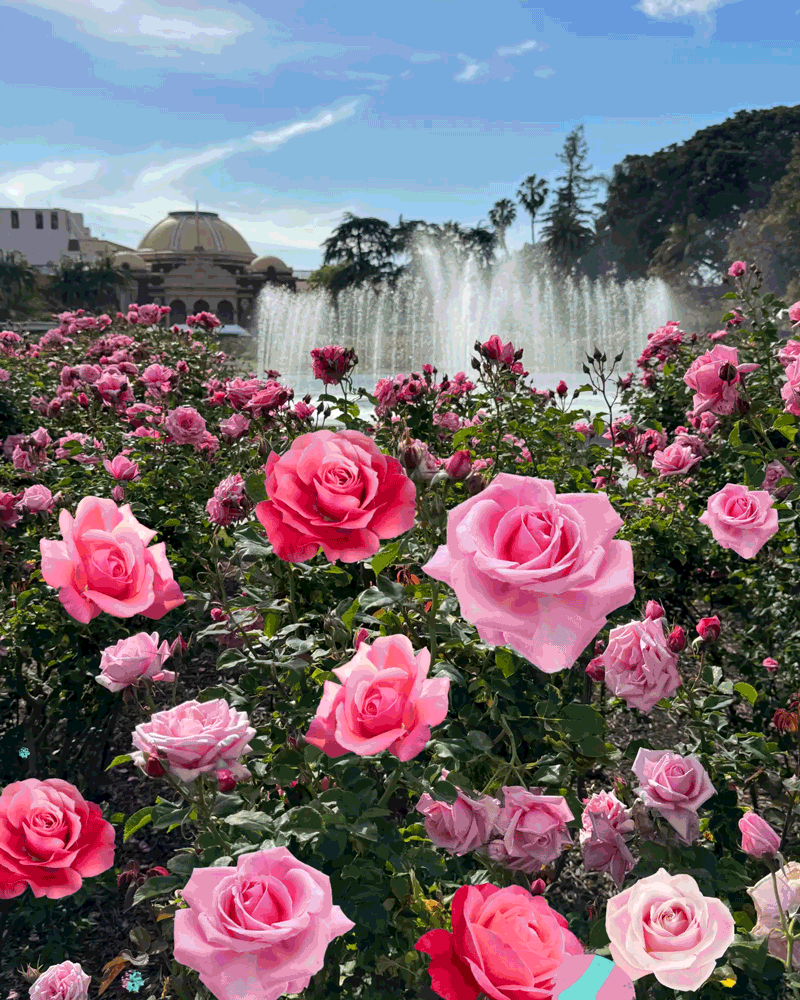Hushed Magnificence of Alhambra
- Share via
GRANADA, Spain — If you linger at twilight in the gardens of the Alhambra, you may hear a soft sound. Some might tell you it is el ultimo suspiro del Moro , the last sigh of the last Moorish king as he left the fortress-palace of his ancestors forever.
And some may tell you that it is merely the whisper of wind in the cypresses.
You take it as you please. The wind does whisper in the cypresses, and over this palace and these gardens there does linger a touch of sadness for a way of life that will not return.
That last king, the one who sighed, left when Ferdinand and Isabella completed reconquering Spain from the Moors in 1492. The Moors were expelled, yes, but what they left behind makes Spain one of the glories of Europe.
Legacy of Beauty
All over most of the nation are mosques turned into churches, bridges, picturesque streets and alleys, innumerable buildings, gardens, tilework on random walls.
Turn in any direction and you will see examples of the beauty that the Moors crafted into the soul of Spain. You (as well as the experts) will find it hard to tell where Moorish leaves off and Spanish begins.
Among the endless elegances that still grace this graceful land, the Alhambra is the most splendid. It sits on a hill in Granada, and as you ride toward it through the city you may well wonder what there is to see here in all this modernity.
There is a great deal, although much is hidden behind commercialism and the march of what is called progress.
The cathedral, the Gypsy quarter of Sacromonte, the Sierra Nevada mountains with their crown of snow, the intricate alleyways such as San Bartolome and the Carrera de Darro that take you back to the Middle Ages with their narrow, mysterious windings, the flowered courtyards behind wrought-iron gates, the old houses leaning toward each other--all these manage to survive the tide of development.
Origin as a Fortress
But everything in Granada is merely prologue to the most spectacularly beautiful monument in Spain, the Alhambra. Al-hambra , the Moors called it, The Red, from the brown-red stone of which it is built.
It was constructed as a fortress-palace by the Moorish kings who dominated Spain from the 700s until 1492. One part of it, the Alcazaba, goes back to the 9th Century. Most of it dates from the 1200s, when it was erected as a fortress against attack but mainly as a retreat where the kings could write, read and recite poetry, hear and play music, listen to the fountains and the nightingales and murmur languorously to their loves beneath the limpid Spanish moon.
This double purpose, fortress and retreat, is obvious from many angles. In some ways it is a marriage of incongruities. Take the Patio de los Arrayanes (the Court of Myrtles.) In the center is a pool where once brightly colored flowers floated. Walks on each side invited leisurely strolling. At the far end are arcades with those delicate carvings called arabesques, which turn stone into lace.
Then above all this gentle elegance rises the rugged Comares Tower. This stark, pock-marked fortress makes no bow to beauty but is primarily a watchtower, with slits through which archers could cut down attackers.
Rank Had Privileges
But for the most part this fortress-palace is mainly palace. It was built for kings who believed that rank hath privileges and is to be used. They brought to Spain the concept of la vida dulce , the good life.
The Alhambra sits on its hill looking out over the plain to the Sierra Nevada. High though it is, the builders managed to get water to the upper levels. Water, to the Moors, coming as they did from their hot, dry desert, was a substance to be respected and cherished, not wasted.
The architects constructed fountains as poets create poems. They are aesthetic as well as utilitarian. Instead of just a pipe spouting water, they used lions’ mouths, or outlets in delicately tiled walls or pools lined with flowers and trees, around which the spray played like shawls blown in the wind.
The main entrance to the Alhambra is through the Gate of Justice, a horseshoe-arch opening in the red stone walls. Your first impression is of withdrawal. The Alhambra looks down on the world below; you are far above the city and its noise, with only the winds and an occasional soft voice.
A World of Serenity
The distance is one of time as well as space. As you enter you find yourself leaving your world behind. If at the moment you have the need for it, the Spanish word for serenity is serenidad.
As the religion of the Moors forbade the making of human or animal images, the decorations, fragile as glass, delicate as chiffon, go in for curlicues, floral designs, bows, curves, all in a profusion that somehow manages to coalesce.
Tall, slim columns line shadowy arcades. Quiet pools reflect flowers, arches, the clean blue of the sky. Garlands of plaster outline buildings. Tiles, in many colors, cover walls. Sturdy old doors, in cedar and other woods, lead from room to room.
And everywhere are those graceful Moorish arches that take you from flowered courtyard to cool arcade, from tiled gallery to breezy balcony. The Patio de los Leones (the Courtyard of the Lions) is a quiet haven. In the center, 12 stone lions spout water into a pool. If you are there at twilight, when the crowd is gone and the only sound is the plash of water in the pool, you will know why the Moors so respected water.
All around the patio are intricately worked columns, nearly 100 of them, each exquisitely carved, with openings through which the sun filters to dapple the tiled floors.
Surrounded by Art
Look up. Many ceilings here are works of art. Look at, not only through, the windows. The arches above them transform prosaic windows into portals of beauty. Glancing through one, you will see the Darro River and the twisting walls of the Albaicin, possibly the oldest section of Granada. Other windows will give you views of the snowy mountains and the plains, or a serene garden.
A quiet road, thankfully with no cars and bordered by soaring cypresses, leads to the Generalife, the summer residence of the kings. Here, too, were and are the main gardens. Here you are surrounded by flowers--roses in endless varieties, jasmine with red and yellow velvety leaves, flowers whose names you don’t know but whose beauty will remain in your memory, yew trees and the ever-present cypresses.
In all directions you will see hedges barbered into square, rectangular or rounded shapes, each grouping separated by bursts of blooming flowers and cool paths for relaxed strolling.
The Patio de la Sultana has a staircase with water flowing down channels in the handrails. From there you can get an overall view of the Alhambra. Again, the best time is twilight, when the gold of the sun highlights the reddish-tan stones. The towers rise, golden and shadowed, against the backdrop of the mountains.
Stolid Incongruity
The only flaw in this otherwise harmonious complex is the Italian Renaissance palace of Carlos V. He was emperor of the Holy Roman Empire as well as King of Spain. He tore down part of the Alhambra to erect a building that might have been right for any city in the empire but which here, amid all this Moorish delicacy, is a stolid incongruity totally out of harmony.
But the Alhambra has enough elegance to absorb this architectural misfit. Somehow, after a time, you come to accept it as part of the whole, as you would a beautiful woman with a lock of hair out of place.
The world has more grandiose buildings than the Alhambra. There are bigger ones, higher ones, older ones. Many buildings figured more importantly in the patchwork quilt of history.
But nowhere else will you find a mix of beauty drawn from such different elements: water, ocher stone, curving arcades, lacelike columns, sunlight on fountains, the tracery of arabesques, flowers combining colors you would never think of putting side by side, the palette of sunset on the old walls, the distant mountains, the glow of moonlight on the garden paths, the sense of tranquillity that steals over you as you ramble quietly.
Information about flights, hotels, restaurants, and car rentals may be obtained from the Spanish National Tourist Office, 1 Hallidie Plaza, Suite 801, San Francisco 94102.
More to Read
Sign up for The Wild
We’ll help you find the best places to hike, bike and run, as well as the perfect silent spots for meditation and yoga.
You may occasionally receive promotional content from the Los Angeles Times.






